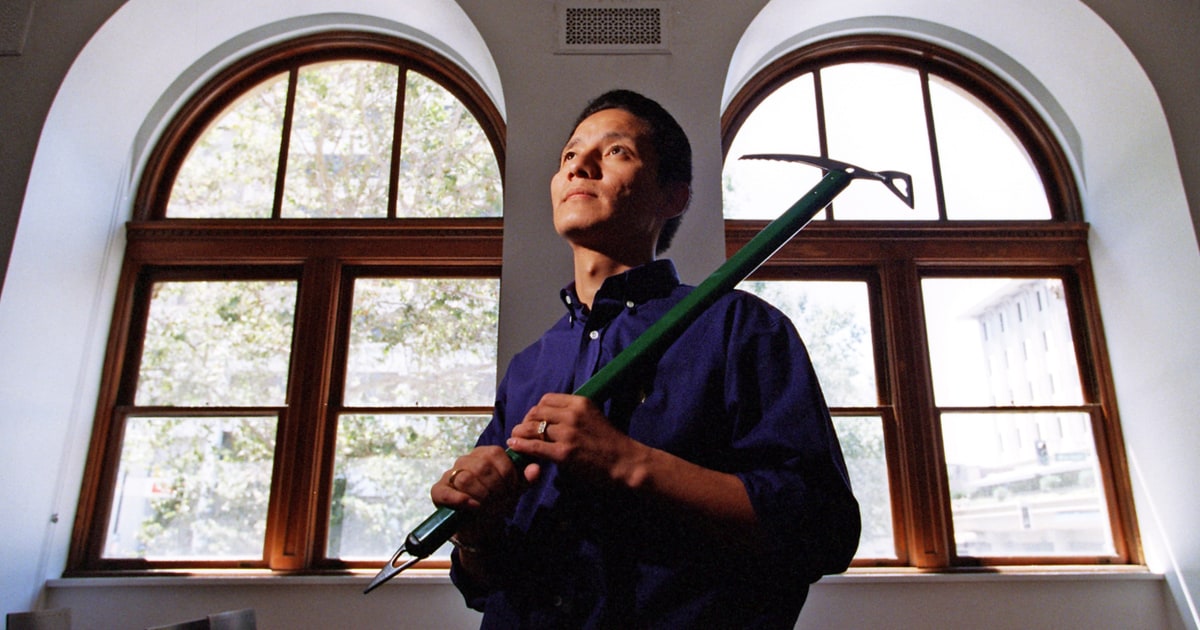Spiderweb Thread Inspires Ultrasmall Microphones
Sound recording could take a cue from arachnid acoustics
Wolfgang Kaehler/LightRocket via Getty Images
“Humans, being arrogant animals, fashioned the microphone after their own ears—but that’s not necessarily the best way to do it,” says Ron Miles, a mechanical engineer at Binghamton University.
Instead, Miles contends, why not model microphones on a creature without any ears at all? In a presentation at the Acoustical Society of America’s meeting in Ottawa on Thursday, Miles described how taking a cue from arachnid acoustics could alter the future of sound recording.
About 150 years ago, a German physician named Hermann von Helmholtz sussed out the first step in how the human ear processes sound: Pressure waves in the air vibrate the eardrum at different frequencies, activating electrical signals that the brain uses to create the experience of hearing. Less than a decade later, inventor Emile Berliner patented a microphone operating on the same principle, with a taut metal diaphragm in place of the eardrum’s tympanic membrane.
On supporting science journalism
If you’re enjoying this article, consider supporting our award-winning journalism by subscribing. By purchasing a subscription you are helping to ensure the future of impactful stories about the discoveries and ideas shaping our world today.
These pressure-based devices have served us well for more than a century, but the microphones we add to myriad gadgets today need to be smaller, more sensitive and clearer than ever before. And when a pressure-based microphone is miniaturized to a certain point—say, for a cell phone or smartwatch—it gets “noisy,” Miles explains. The smaller the diaphragm, the more easily it is rattled by stray molecules floating in the air. In other words, the microphone apparatus itself is so sensitive to background noise that the latter can drown out desired sounds.
Miles says sticking to the pressure-based model may be holding microphone technology back. “If you want to make something small, you should think about how small animals do it,” he says. They have the advantage of millions of years of evolutionary R&D.
Many arthropods, including mosquitoes and spiders, don’t have organs that perceive a sound’s pressure waves at all. Instead they detect the airflow generated by a sound: specialized hairs on their body sense the speed and direction of air particles as those particles are swept up by a sound wave. And as Miles and his team found in 2022, some spiders even fully outsource hearing to their web: sounds’ airflow causes the silky strands to vibrate, which the arachnids can sense through touch.
After this discovery, the researchers set out to determine if an airflow-based detector could actually sense and distinguish between the range of frequencies needed for a human-use microphone—not just those that interest hungry spiders. The Binghamton team took strands of silk from orb weaver arachnids called bridge spiders (which conveniently live in the university’s nature preserve) and used a laser vibrometer to record how they responded to different sound frequencies.
The average human can hear sounds from about 20 hertz, or cycles per second, to 20 kilohertz—and the spider silk proved responsive all the way from 1 Hz up to 50 kHz. “It’s a much bigger range, better than any [existing, pressure-based] microphone,” Miles explains. “Its frequency response was basically perfect.”
Because it would be impractical to have little fragments of spider silk in our phones, Miles and his team are working to develop a silicon chip that simulates the substance’s properties. “Instead of threads, we make cantilever beams,” he explains. “They’re just like little diving boards but half a micron thick.”
A test of these chips, published in April in the Journal of the Acoustical Society of America, indicates that tiny versions of flow-based microphones don’t suffer the same “performance penalty” that pressure-based microphones do when they are miniaturized. “It was pleasant surprise,” says Binghamton acoustic engineer Junpeng Lai, the study’s lead author. “If the cantilever is thin enough, size doesn’t matter. If you build it 10 times smaller, the sound fidelity is the same.”
While we’re still years away from microphones based on arachnid technology, Miles and Lai’s findings are an “elegant” demonstration of the seemingly endless applications of spider silk, says Fritz Vollrath, an evolutionary biologist at the University of Oxford, who has studied spiders and their webs for nearly 50 years. Over the course of his career, Vollrath has seen spider silk inspire advances across disciplines as disparate as materials science, soft robotics, nerve regeneration, and optical and chemical sensing.
“We’re so used to this marvel in day-to-day life that we don’t question it,” Vollrath says. “When you start studying it, you begin to realize how amazingly sophisticated the web really is.”













